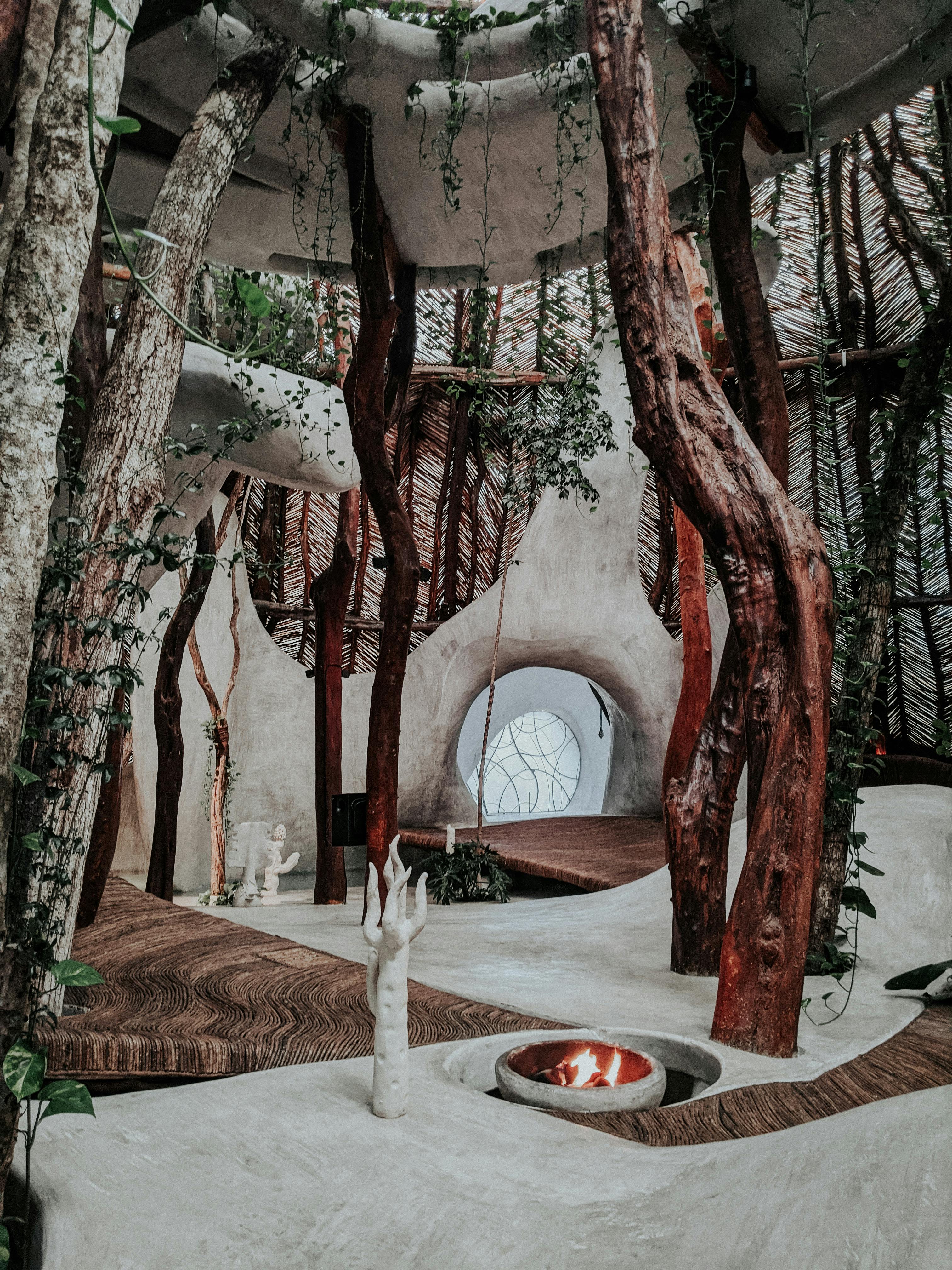Biophilic Design: Nature-Inspired Spaces for Optimal Health
Can our surroundings significantly impact our well-being? Imagine stepping into a room filled with natural light, lush greenery, and organic textures. Your stress levels drop, your mood lifts, and you feel an inexplicable connection to the world around you. This is the power of biophilic design – a revolutionary approach to creating spaces that nurture our innate bond with nature and promote holistic health.

The Origins of Biophilic Design
The concept of biophilia, meaning love of life or living systems, was first introduced by psychoanalyst Erich Fromm in the 1960s. However, it was biologist Edward O. Wilson who popularized the term in his 1984 book Biophilia, proposing that humans have an innate tendency to seek connections with nature and other forms of life.
This idea laid the foundation for biophilic design, which emerged as a formal concept in the 1990s. Pioneers in the field, such as Stephen Kellert and Judith Heerwagen, began to explore how our evolutionary connection to nature could be applied to architecture and interior design to create spaces that enhance human health and well-being.
The Science Behind Biophilic Design
Research has shown that exposure to natural elements can have significant positive effects on our health. A landmark study by Roger Ulrich in 1984 found that hospital patients with views of nature recovered faster and required less pain medication than those facing brick walls.
Subsequent studies have corroborated these findings, demonstrating that biophilic design elements can:
-
Reduce stress and anxiety
-
Lower blood pressure and heart rate
-
Improve cognitive function and creativity
-
Enhance mood and overall well-being
-
Boost productivity in workplace settings
-
Accelerate healing in healthcare environments
These benefits are attributed to our evolutionary history, where survival depended on a positive relationship with nature. Our bodies and minds are still wired to respond positively to natural environments, even in our modern, urbanized world.
Key Elements of Biophilic Design
Biophilic design incorporates both direct and indirect experiences of nature into our built environments. Some key elements include:
-
Visual connections to nature: Windows with views of greenery, indoor plants, and nature-inspired artwork
-
Non-visual connections: Natural sounds, textures, and scents that evoke nature
-
Non-rhythmic sensory stimuli: Subtle movement of air or dappled light that mimics natural phenomena
-
Thermal and airflow variability: Spaces that allow for changes in temperature and airflow
-
Presence of water: Water features, aquariums, or even images of water
-
Dynamic and diffuse light: Lighting that changes throughout the day to mimic natural light patterns
-
Biomorphic forms and patterns: Design elements that reflect shapes and patterns found in nature
-
Material connection with nature: Use of natural materials like wood, stone, and bamboo
-
Complexity and order: Balanced spaces that offer both stimulation and coherence, similar to natural environments
Implementing Biophilic Design in Everyday Spaces
While large-scale architectural projects often showcase dramatic biophilic elements, there are many ways to incorporate nature-inspired design into our everyday spaces:
-
Home environments: Add houseplants, use natural materials in furnishings, and maximize natural light. Consider creating a small indoor garden or installing a tabletop water feature.
-
Workplaces: Introduce living walls, provide access to outdoor spaces, and use nature-inspired color schemes. Incorporate natural textures in furniture and decor.
-
Healthcare settings: Design healing gardens, use nature-themed art, and create spaces that allow patients to connect with the outdoors.
-
Educational institutions: Develop outdoor learning spaces, bring plants into classrooms, and use natural materials in building and furniture design.
-
Urban planning: Create more green spaces, rooftop gardens, and urban forests to bring nature into cities.
The Future of Biophilic Design
As urbanization continues to increase globally, the importance of biophilic design in promoting human health and well-being is becoming increasingly recognized. The field is evolving to incorporate new technologies and sustainable practices:
-
Smart biophilic design: Integration of technology to create responsive, nature-inspired environments that adapt to occupants’ needs
-
Biomimicry in architecture: Designing buildings and systems that mimic natural processes for improved efficiency and sustainability
-
Virtual nature experiences: Using virtual and augmented reality to bring nature experiences to spaces where physical implementation is challenging
-
Biophilic urban planning: Developing entire cities with biophilic principles at their core, creating healthier, more resilient urban environments
As we face global challenges like climate change and increasing rates of stress-related illnesses, biophilic design offers a powerful tool for creating healthier, more sustainable living environments.
Biophilic Design: Practical Tips for Healthier Spaces
-
Maximize natural light in your home or office
-
Incorporate a variety of indoor plants, focusing on low-maintenance species
-
Use natural materials like wood, stone, and cotton in your decor
-
Create a small indoor water feature or fountain
-
Choose artwork depicting natural scenes or elements
-
Use nature-inspired colors and patterns in your interior design
-
Open windows regularly to allow fresh air and natural sounds
-
Create a dedicated outdoor space, even if it’s just a small balcony garden
-
Use essential oils or natural scents to bring nature’s aromas indoors
-
Incorporate organic shapes and forms in your furniture and decor choices
In conclusion, biophilic design represents a powerful intersection of nature, science, and architecture that can significantly enhance our health and well-being. By consciously incorporating elements of the natural world into our built environments, we can create spaces that not only look beautiful but also nurture our physical and mental health. As we continue to navigate an increasingly urbanized world, embracing biophilic design principles offers a path to healthier, more harmonious living spaces that honor our innate connection to nature.





